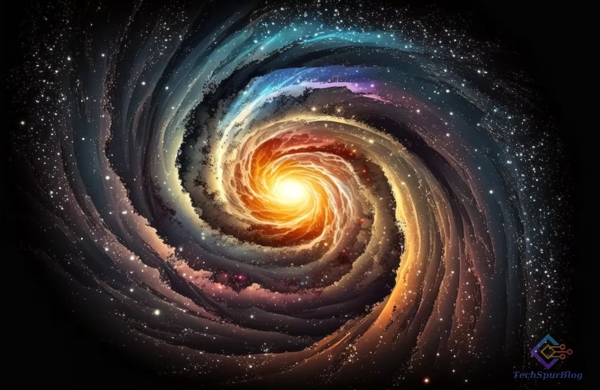
NASA’s space telescopes have made an extraordinary discovery, revealing the most distant black hole ever observed in X-rays, which emerged only 470 million years after the Big Bang. This groundbreaking finding challenges existing theories about the early universe and the formation of supermassive black holes.
A team of researchers, combining data from NASA’s Chandra X-ray Observatory and the James Webb Space Telescope, found a distinct signature of a growing black hole in the midst of its development. This discovery was made possible by the cosmic magnifying effect of gravitational lenses.
Akos Bogdan from the Center for Astrophysics | Harvard & Smithsonian (CfA), who led the research, said, “We needed Webb to find this remarkably distant galaxy and Chandra to find its supermassive black hole. We also harnessed a cosmic magnifying glass that amplified the amount of light we detected. This magnification effect is known as gravitational lensing.”
Also Read: Euclid telescope Reveals First Images of the Dark Universe
The black hole was identified in a galaxy called UHZ1, located in the direction of the galaxy cluster Abell 2744, which is situated 3.5 billion light-years from Earth. However, Webb’s data revealed that the galaxy is much more distant, at approximately 13.2 billion light-years from Earth, a mere 3% of the age of the current universe.
Over the course of more than two weeks of observations with Chandra, intense and superheated gas emitting X-rays was detected in this galaxy, a hallmark of a growing supermassive black hole. The light from the galaxy and the X-rays from the gas surrounding the supermassive black hole were magnified approximately fourfold by intervening matter in Abell 2744, thanks to gravitational lenses. This enhancement allowed Chandra to detect the faint X-ray source.
This discovery holds significant implications for our understanding of how some supermassive black holes can attain colossal masses shortly after the Big Bang. Do they form directly from the collapse of massive gas clouds, creating black holes weighing between 10,000 and 100,000 times the mass of our Sun, or do they originate from the explosions of the first stars, resulting in black holes with a mass as little as 10 to 100 solar masses?
Also Read: NASA Successfully Conducts First Simulation for Moon Mission Artemis II
Andy Goulding from Princeton University, a co-author of the Nature Astronomy article, and the lead author of a new article in The Astrophysical Journal Letters detailing the galaxy’s distance and mass using Webb’s spectrum, commented, “There are physical limits to how quickly black holes can grow once they have formed, but those born with more mass have an advantage. It’s like planting a sapling, which takes less time to grow into a full-sized tree than starting with just a seed.”
Bogdan’s team has found compelling evidence that the newly discovered black hole was born massive, with an estimated mass ranging between 10 and 100 million times that of the Sun. This mass range closely matches the stars in the galaxy where it resides, in stark contrast to black holes in the centers of nearby galaxies, which typically contain only about a tenth of the mass of the stars in their host galaxy.
The immense mass of the black hole at such an early age, coupled with the amount of X-rays it emits and the galaxy’s brightness detected by Webb, aligns with the theoretical predictions made in 2017 by co-author Priyamvada Natarajan from Yale University. According to Natarajan, this discovery represents the “first detection of a ‘massive black hole’ and the strongest evidence to date that some black holes form from massive gas clouds.” She added, “For the first time, we are witnessing a brief stage in which a supermassive black hole weighs roughly as much as the stars in its galaxy before pulling ahead.”
Also Read: NASA: Earth-Threatening Asteroid Conceals a Secret – Could This Save the Planet?
This groundbreaking discovery sheds new light on the formation of supermassive black holes and offers tantalizing insights into the early universe. As our understanding of these cosmic giants continues to evolve, scientists are on the verge of rewriting the textbooks on astrophysics and the evolution of black holes.

Leave a Reply